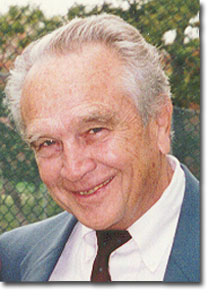
Suddenly, however, as Bob Humphrey talked, I felt that prickly sensation on the back of my neck. It was powerful, and really quite physical. The things that he said, the stories he told, touched me in a way that has changed me forever. I was stunned to hear him explain, clearly and matter-of-factly, the meaning of life. He called his theory variously "The Life Value," or Life Values, Dual Life Value or Balanced Life Value. I sometimes think of them, now, simply as "Living Values." As I came
to know him and his personal history, I was amazed to hear that he had
addressed, literally, hundreds of thousands of people over the years.
His Life Value Theory and teaching methods had been used successfully to stop
violence and promote cross-cultural harmony, In War, "Cold" and "Hot." Teaching the Life Value proved effective in stopping anti-US sentiments due to "Ugly Americanism" in southern Italy (down in the heel of the "boot"), in Turkey, Korea, Okinawa, and Thailand during the Cold War. The goal of each of these programs was simply to create better human relations in situations where bad relations were interfering with or preventing the accomplishment of a mission of strategic significance. The most notable successes were in these important programs:
His methods worked even in his two most challenging "hot" war assignments in Vietnam. The two daring win-the-people operations where Humphrey taught the "Life Values" were:
Quiet commendations were forthcoming for those programs from top US military leaders in the Army, Navy, and Marines. The South Vietnamese government borrowed the approach for integrating the "hill people" into their own naval forces, proving that his methods could work in the cultures of both the East and the West. In Peace. When race riots swept across America in the late1960s, a desperate program called "touch-feel sensitivity training" was forced into all of the military services. However, at the request of the USMC's Commandant Chapman, Navy Secretary Chaffee granted an "exception" for the Marines. The Corps used the Life Values Program instead. More than one Marine has heard the current Commandant, General Charles Krulak, say that Humphrey's program saved the Marine Corps. In the Schools. In the1980s, Humphrey and his sons, working with San Diego's National University, expanded their values-based conflict resolution program into a full youth development curriculum. They proved that the Life Values method, integrated into a human nature-driven (mind/body/art/values) educational program, would educate troubled youths anywhere. They perfected it with Mexican-American teenage dropouts near the Mexican/California border and with Native (Canadian Indian) dropouts in northern Alberta. The new curriculum put reluctant young male dropouts into college, into the military, and even into corporate-type jobs. It took the girls away from the gangs and put them into college, and into respectable marriages and jobs. Humphrey's new educational approach received many commendations. San Diego County called it: "the best" program, for both education and juvenile corrections. National City, California, Chamber of Commerce reported that Humphrey had discovered "the secret to education." In Canada, it was touted as the "educational breakthrough of the decade." A little background on Humphrey's storybook life is important. Robert Humphrey was a child of the Great Depression. Those were the days when life's lessons were learned in the school of hard knocks. He earned money as a semi-professional boxer. He rode freight trains, worked in the Citizens Conservation Corps (the CCCs), and finally joined the Merchant Marines. Those experiences got him through his youth, worldly-wise but morally sound. He transferred into the US Marines during World War II. There, as a rifle-platoon leader on Iwo Jima, he passed the ultimate course in life-and-death values. Near the war's end, a gunshot-wound ended his hopes for a professional boxing career. He was discharged from the Marines. For twelve years he passed through eight colleges and universities "searching, just searching." He was looking for answers to that eternal question: "Why?" Why that terrible Depression that devastated his peaceful little hometown? Why that insanity on Iwo Jima that killed most of his Marine friends? He took a Harvard Law degree and settled into teaching Economics at MIT. Then came the Cold War with the predictions that the Communists would win. He went back overseas to see if his global experiences would guide him in solving America's self-defeating Ugly Americanism. All through the first crucial Cold-War decades, his contracts were financed--success after success--by the US Information Service, the Chrysler Missile Corporation, the Army Research Office, and the Marine Corps. He taught culture-transcendent, "win-the-people" values in the most vital overseas areas--those surrounding the Communist block. The approach did overcome the Ugly Americanism. It did win back the foreign peoples. And it kept the lid on sabotage and violence in his assigned areas. It opened up a new social-scientific pathway to human conflict-resolution. Robert Humphrey passed away during the summer of 1997. He will be sorely missed. - Jack Hoban
Values Stories:
Bob Humphrey on the podium:
Links:
The Life Values Institute Inc. Robert L. Humphrey photo by Jim Manley © |
 About
Robert L. Humphrey
(1923-1997)
About
Robert L. Humphrey
(1923-1997)